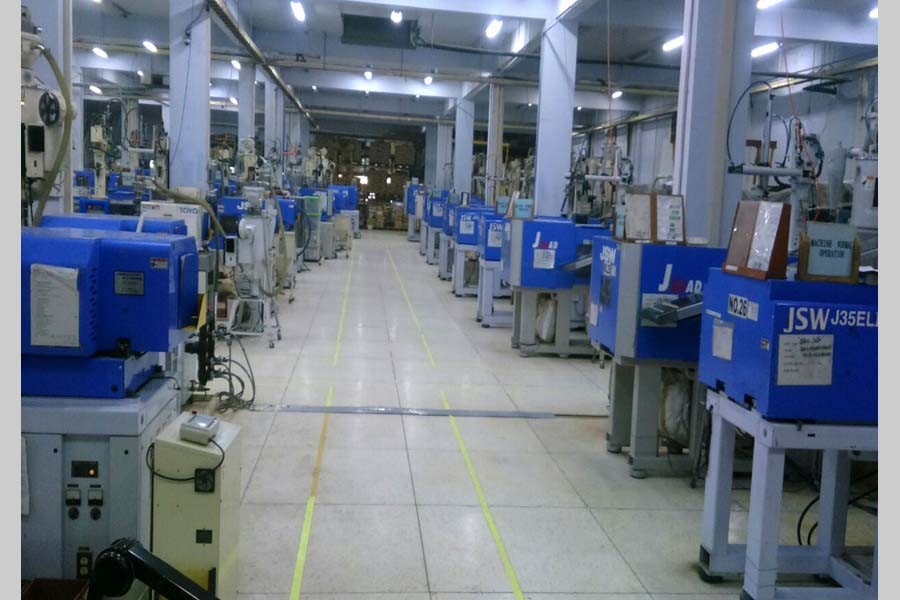Following the shifting of tanneries from Hazaribagh to Savar, the next big move that has to be in place is the shifting of plastic manufacturing units to a safe, hazard-free location. Although there are many problems facing the tanneries in the relocated tannery hub at Savar, the authorities are reportedly working to address those as part of the relocation package. As for relocation of plastic factories, the main problem, unlike that of the tanneries, is that these are numerous in number -- in all conceivable shapes and characters -- and are spread out all over the country.
While pollution caused by plastic waste is tormenting the environment including aquatic resources necessitating urgent action, the reason why this manufacturing sector needs better management is the ever-increasing demand for plastic products at home and abroad. The country's export of plastic goods marked a 21 per cent rise in the first half of the current fiscal year over the corresponding period of the last fiscal. Plastic sector fetched US$ 56.54 million during July-November period of FY 2018-19 compared to that of the first half of FY 2017-18 -- US$46.63 million. The export target of the sector was US$100 million for FY 2018-19. In the FY 2017-18, the country exported US$98.48 million, according to Export Promotion Bureau (EPB) data.
The figures, clearly, are not big enough to inspire great optimism. However, the fact remains that in Bangladesh, plastic plants have only recently opted for modern technology in producing various food and non-food grade products. With more technology back-up, and accompanying diversification, the industry -- though scattered and even disorganised -- has the potential to grow extensively if provided with the right facilities. In this context, it may be noted that exporting was far from the targeted goal of the industry even a decade back, though there were few enterprises which were exporting in small volumes. Mainly it is the local demand that motivated factories -- medium, small and very small -- to produce plastic products.
Annual sales of plastic products in Bangladesh are currently estimated at around Tk 150 billion in the local market, in which household items account for nearly Tk 20 billion. Increase in domestic supplies reportedly grew at 15 per cent a year over the last several years. Industry insiders, quoted in recent newspaper reports, said the sector is experiencing fresh investment to the tune of Tk 1-1.5 billion each year. The country's plastic sector is said to employ around 1.2 million people directly and indirectly in well over 4,500 small, medium and large manufacturing units. Value addition in manufacturing is also commendably high, ranging between 50 and 70 per cent. Earnings from plastic exports stood at $85.70 million in fiscal 2013-14. At present, around 5,000 factories are producing plastic products in more than a dozen categories.
Use of plastic products in the country has grown manifold thanks to the dynamic improvement in recycling technology -- a key stimulus in increased production on the one hand and growing consumer preference on the other. However, lack of quality and diversification in product range is commonly attributed as the main impediment to the sector's growth to a far higher level. This holds true in respect of domestic consumption but more so, when it comes to exporting.
Global market of plastic is essentially demand-driven. Price structure of plastic products is highly wide-ranging, able to absorb immensely diversified products by the low, middle and up-end market segments.
Despite the progress reported in the media recently, concerned quarters consider these far from what it actually should have been in view of the overwhelming surge in global demand. Major improvement in infrastructure, waste management, recycling and skills development are some of the critical areas in need of urgent attention to push the growth momentum to the desired level. In addition to these basics, product development and product adaptation should be attended to as a matter of priority. This, unfortunately, is an area many of the manufacturers miss out resulting in less than expected success in accessing overseas markets.
Now, these potential and prospects of growth can only be expected to be realised once the industry is shifted to a suitable location -- a plastic hub, maybe on the outskirts of the capital. This newspaper, not long ago, had pointed out the need for a plastic hub in the country in order that attempts for improvement of the sector could be taken up in a planned manner beside providing opportunities for the factories to operate hazard-free and attract overseas investment. Industry leaders have also been demanding for a dedicated location which, beside providing hazard-free production process, will also help meet various compliance needs of overseas buyers. Concerned quarters feel that a plastic hub with modern recycling plant, waste management facility, properly trained workers and necessary infrastructure will be able to manufacture products at competitive prices for exports even after a reasonable raise in the present wage structure.


